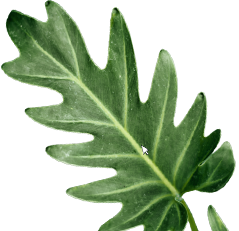World Map Correct Size
World Map Correct Size
Are you tired of seeing distorted world maps that inaccurately represent the size of countries and continents? If so, you’re not alone. The truth is, the world map you’ve been looking at your entire life is not the correct size.
Have you ever wondered why Greenland appears to be the same size as Africa on most world maps, when in reality, Africa is 14 times larger? This is just one example of the many inaccuracies that exist on traditional world maps. These distortions can lead to misunderstandings about the true size and importance of different countries and regions, perpetuating stereotypes and misinformation.
Despite the inaccuracies of traditional world maps, there are still countless amazing places to visit and unique cultures to experience. From the stunning natural beauty of New Zealand to the vibrant street life of Tokyo, there is no shortage of destinations to explore. And by using a more accurate world map, you can gain a deeper appreciation for the true size and diversity of these places.
In summary, traditional world maps are often inaccurate and can perpetuate stereotypes and misinformation. However, by using a more accurate world map, you can gain a deeper appreciation for the true size and importance of different countries and regions. And despite these inaccuracies, there are still countless amazing places to visit and unique cultures to experience around the world.
What is the True Size of Countries on the World Map?
The true size of countries on the world map can be quite different from what we’re used to seeing. For example, Africa is actually 14 times larger than Greenland, despite appearing to be roughly the same size on most world maps.
Why do Traditional World Maps Distort the Size of Countries?
Traditional world maps use the Mercator projection, a system of mapmaking that distorts the size of countries near the poles. This was done to make it easier for sailors to navigate using compasses, but it has led to many inaccuracies and misunderstandings about the true size and importance of different countries and regions.
How Does Using a More Accurate World Map Benefit Travelers?
By using a more accurate world map, travelers can gain a deeper appreciation for the true size and diversity of different countries and regions. This can lead to a more nuanced understanding of different cultures and histories, and help to break down stereotypes and misconceptions.
What are Some Examples of More Accurate World Maps?
There are many different types of world maps that aim to be more accurate than the traditional Mercator projection. Some examples include the Peters projection, the AuthaGraph projection, and the Dymaxion map. Each of these maps has its own unique strengths and weaknesses, and can offer a different perspective on the world.
FAQs about World Map Correct Size
Q: Why do traditional world maps distort the size of countries?
A: Traditional world maps use the Mercator projection, a system of mapmaking that distorts the size of countries near the poles. This was done to make it easier for sailors to navigate using compasses, but it has led to many inaccuracies and misunderstandings about the true size and importance of different countries and regions.
Q: What are some examples of more accurate world maps?
A: Some examples of more accurate world maps include the Peters projection, the AuthaGraph projection, and the Dymaxion map. Each of these maps has its own unique strengths and weaknesses, and can offer a different perspective on the world.
Q: How can using a more accurate world map benefit travelers?
A: By using a more accurate world map, travelers can gain a deeper appreciation for the true size and diversity of different countries and regions. This can lead to a more nuanced understanding of different cultures and histories, and help to break down stereotypes and misconceptions.
Q: What are some of the challenges of using more accurate world maps?
A: One of the main challenges of using more accurate world maps is that they can be more difficult to read and interpret than traditional maps. They may also require a different set of skills and knowledge to use effectively, such as an understanding of different map projections and coordinate systems.
Conclusion of World Map Correct Size
While traditional world maps may be familiar to us, they are often inaccurate and can perpetuate stereotypes and misconceptions. By using a more accurate world map, we can gain a deeper appreciation for the true size and diversity of different countries and regions, and break down barriers of misunderstanding and misinformation. So whether you’re a seasoned traveler or just starting to explore the world, consider using a more accurate world map to guide your journey.
